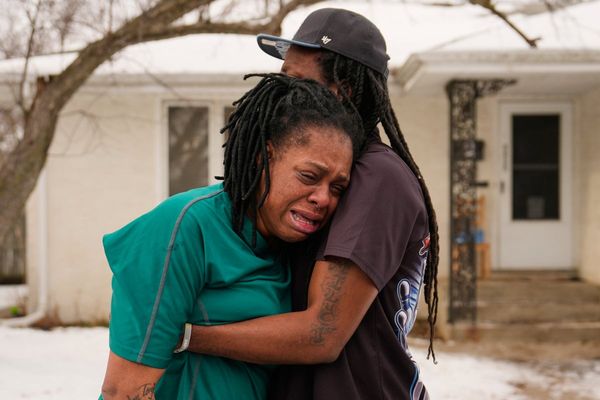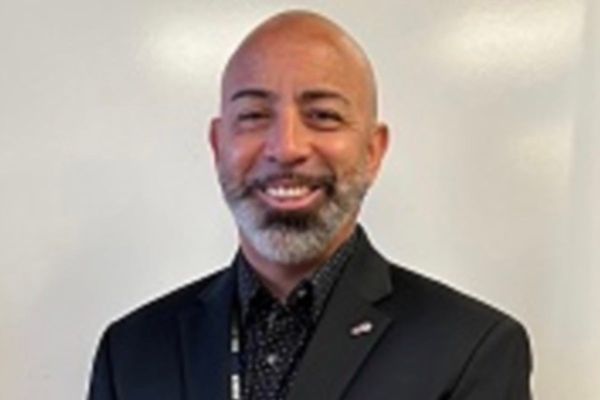
When the largest-ever combined airborne and amphibious military operation took place on the coast of Normandy 80 years ago, men were not solely to commend for its meticulous preparation. The success of D-Day can also be attributed to a unique branch of the British Royal Navy comprised of women known as the “Wrens”.
At its peak in 1944, the Women’s Royal Naval Service (WRNS, or the “Wrens”) branch of the British Royal Navy counted at least 74,000 members. These women occupied 200 different positions as switchboard operators, signallers, coders, writers, electricians, drivers and mechanics. During World War II, 303 of them lost their lives.
After having paid tribute 10 years ago to the last living British veterans who landed on the beaches of Normandy, UK photographer Robin Savage decided to turn his lens on the Wrens in time for the 80th anniversary of D-Day on June 6th. His portraits tell the stories of seven women who participated in the Normandy landings in 1944 and who are now members of the Association of Wrens.
“I was delighted to be able to photograph them and help share their histories, because I feel we must never forget the vital contribution women made in the Second World War,” Savage explains.
He says it is “impossible to choose one story over another”, since each is both “absolutely fascinating and very humbling”.
Christian Lamb, 103 years old, WRNS Third Officer
Lamb was one of the first British women to join the WRNS when World War II broke out. After a stint at a training establishment in Kensington and the headquarters of the branch, Lamb was promoted to Leading Wren and later WRNS Third Officer. She was deployed to Belfast and worked at an operations center at the castle where the navy was based. Many of ships crossing the Atlantic gathered at that port to form convoys.
She was then posted to the combined operations headquarters in central London in early 1944.
“I worked on the actual maps of the planned landings. There were many of us working on individual pieces of the enormous jigsaw; none of us knew or ever discussed what the others were doing,” she says.
The veteran officer described the work as “intense and exciting”. When D-Day finally came on June 6,1944, she heard the announcement on the radio at 6 in the morning.
“I was thrilled to know that at last we had managed to carry out the plans, which had been envisaged for so long by so many brilliant brains. It was the beginning of our campaign to help get back France for the French.”
Dorothea Barron, 99 years old, signaller
Before D-Day, Barron was based in Scotland, where she taught sailors how to use Morse code by using a flashlight. She also helped with and took part in the testing of Mulberry harbours, portable harbours developed by the Brits and used extensively in the Normandy landings to facilitate offloading cargo onto beaches rapidly to supply the Allied forces.
At the time she was completely unaware that she was helping to prepare Operation Overlord, the invasion of Normandy. Barron remembers that one minute there were ships and sailors everywhere, and the next minute “they were all gone”.
Dorothy Smith, 100 years old, writer
Smith was a writer during World War II who worked in the Portsmouth area in the south of England for the WRNS. Her duties included keeping written accounts and records of the movements of military personnel. Leading up to D-Day, she recalls regularly seeing large military convoys moving along the south coast, including on June 5th – a day before the operation took place. By the following day, the ships had sailed and “all was quiet”.
Hazel Picking, 98 years old, signaller
It was at the tender age of 17 that Picking joined the WRNS and underwent her initial training. She was responsible for signalling ships during the war and was based in Hampshire working alongside the motor torpedo boats in the Solent – a major shipping lane that runs between the Isle of Wight and mainland Britain. On the eve of D-Day, she went on watch and says she saw so many ships in the Solent that “you could easily walk across to the Isle of Wight”. The following day, they had all gone. Eighty years after that fateful day, she still wears her Wrens hat with pride.
Marie Scott, 97 years old, switchboard operator
Having previously worked as a telephonist, Scott joined the WRNS as a switchboard operator. The young recruit quickly found herself working at the headquarters of the Supreme Headquarters Allied Expeditionary Force (SHAEF) just outside of Portsmouth in the south of England. Scott was only 17 years old on D-Day. Her job was to use equipment that was directly connected to the forces landing in France. She relayed vital messages to the beach commanders in Normandy and remembers clearly hearing the battle raging in the background.
She says the sounds she heard from the beach that day were shocking and have stayed with her for the rest of her life.
Patricia Owtram, 100 years old, linguist and interceptor
Owtram remembers joining the WRNS in 1942 when she was 18 years old. Fluent in German, she was tasked with intercepting German shipping signals and supplying them to coders at Bletchley Park, the centre of Allied code-breaking, in Milton Keynes. It was there that renowned mathematician Alan Turing worked and played a key role in the Allied war effort.
Owtram found the fact that she would be taking over a job normally done by a naval officer “very attractive”. Once the war was over, she became a well-known journalist and published an autobiography with her sister Jean Argles, an agent with the Special Operations Executive (SOE) of the British secret service.
Ruth Bourne, 98 years old, Bombe code-breaking machine operator
Much like Picking, Bourne joined the WRNS at age 17 and was one of the youngest to work at Station X – a secret radio interception and transmission station at Bletchley Park. She worked with an electro-mechanical machine called Bombe used by British cryptologists to help decipher German codes that had been encrypted with their famous Enigma machine.
Bourne worked endless hours, often with no breaks, standing on her feet all day. She says that from the very first day of her work as a Bombe operator to the end of her time at Bletchley, she “did what I was told on demand”. Looking back, she says that it was very satisfying to know she and her fellow colleagues had played a key role in helping break German codes.
This article is a translation of the original version in French.







